| Dave Skok forwarded me this awesome photo from Ross Kessler. Ross writes, “From the Murray Bar in Livingston MT on the wall of fame with many many others.” (click the photo to view full size) |  |
Category: destinations
News from Lake Chargoggagoggmanchauggag
oggchaubunagungamaug
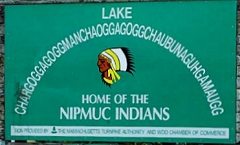 Listening to a radio program tonight while tying flies, I heard a voice (two actually) from out of the past. It was Ethel Merman and Ray Bolger singing a song about a lake in western Massachusetts that I hadn’t heard in over fifty years but which was one I enjoyed singing when I was a kid. A song with the simple but tongue-twisting title of “Chargoggagoggmanchauggagoggchaubunagungamaugg.” (In case you’re wondering, yes, I did have to look up the proper spelling). Just repeating this word over and over used to drive my parents crazy–which is probably one reason why I liked the song so much.
Listening to a radio program tonight while tying flies, I heard a voice (two actually) from out of the past. It was Ethel Merman and Ray Bolger singing a song about a lake in western Massachusetts that I hadn’t heard in over fifty years but which was one I enjoyed singing when I was a kid. A song with the simple but tongue-twisting title of “Chargoggagoggmanchauggagoggchaubunagungamaugg.” (In case you’re wondering, yes, I did have to look up the proper spelling). Just repeating this word over and over used to drive my parents crazy–which is probably one reason why I liked the song so much.
Another reason was that it reminded me of happy summer days fishing on this lake. This was, after all, where I had caught my first largemouth bass, first pickerel, and first horned pout (none on flies but that didn’t matter at the time). It was also where I learned to water-ski (well, sort of). It was a magical place with a magical name: Lake Chargoggagoggmanchauggagoggchaubunagungamaugg (also called Lake Webster by the phonetically challenged).
Thinking about this lake, I decided to do a little research. Here’s what I found; well, some of what I found. From Wikipedia:
Chargoggagoggmanchauggagoggchaubunagungamaugg (pronounced: don’t even try), a 46-letter alternative name for this body of water, is often cited as the longest place name in the United States and 6th longest in the world. Its 15 uses of “g” are the most instances of any letter in a word. The name also contains 9 instances of the letter “a” (not including the “a” in “lake”), more than any word in the English language.
This longest name means approximately “Englishmen at Manchaug territory at the meeting and fishing place at the boundary” and was applied in the 19th century when White people built factories in the area. “Manchaug” is derived from the “Monuhchogoks”, a group of Nipmuck Indians that lived by the lakeshore. Spelling of the long name varies, even on official signs near the lake.
I’ll bet you didn’t know this. I’ll bet also that you didn’t know that it’s still another week or so away from the arrival of striped bass in the Boston Harbor area. As I sit here counting the days until I can get back to the salt–weather permitting, of course–I’m wondering if the largemouth bass are now preparing their spawning beds on Lake Chargoggagoggmanchauggagoggchaubunagungamaugg. I’ll bet that they are.
Yes but I photograph well
 Our friend and neighbor Dave Skok just returned from a trip to Costa Rica where, in additional to catching a few fishies, he also took some amazing photographs. A short selection of them is posted on Moldy Chum (which, coincidentally, is probably also a fair description of Dave after several weeks in the jungle). Take a look at the brilliant reds on the Costa Rican rainbows–their flanks look like sunrise in a Turner watercolor.
Our friend and neighbor Dave Skok just returned from a trip to Costa Rica where, in additional to catching a few fishies, he also took some amazing photographs. A short selection of them is posted on Moldy Chum (which, coincidentally, is probably also a fair description of Dave after several weeks in the jungle). Take a look at the brilliant reds on the Costa Rican rainbows–their flanks look like sunrise in a Turner watercolor.
Back from Florida
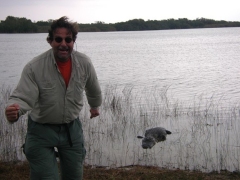 I’m back. Back from a great trip down south, to the Everglades and other places in southwest Florida. Good times with good friends Dale Linder, Dave Skok and Jamie Boyle.
I’m back. Back from a great trip down south, to the Everglades and other places in southwest Florida. Good times with good friends Dale Linder, Dave Skok and Jamie Boyle.
Dale and I began in Florida City, fishing the Aerojet canal on the edge of the Everglades Wilderness area for peacock bass, largemouth bass, oscars, and mayan cichlids and whatever else we could catch. It took us a while to figure out some of the best places and techniques but we eventually did and did as well as we could while just walking the shoreline. Dave and Jamie fished up around Fort Lauderdale and then joined us the next evening in Florida City.
The following day we all rented canoes from the Everglades Youth Hostel and headed off for Flamingo, where the plan was to fish both the bay side and the back country. When we got to the water, however, the bay side looked really discolored and the wind was picking up so Dale and I chose not to paddle the five or six miles to the beachside camp with Dave and Jamie–and two friends who had joined them–but to set up our tents in the campground and wait and see what the weather was going to do (a cold front with heavy winds was predicted for the next day) and do a short paddle up into Coot Bay, where my friend Tim Borski had told us there were usually a lot of tarpon and snook to be found. Maybe so but not when we got there; the water was very discolored and the wind was strong and the fish had gone elsewhere. Couldn’t say that I blamed them.
Knowing when to fold ’em, we headed back early, about two hours before sunset, and decided to check out a pond that we had passed on our way in to Flamingo. It was called Sweetbay Pond on the map and was about fifteen miles from our campground and a short walk in from the road. A really lovely pond it was, too, ringed with reeds and mangroves with water as clear as could be with flat limestone all along the edges, which made for relatively easy wading. And not too many alligators either.At the end of the path, almost as soon as I reached the water’s edge, I could see fish moving in the shallows. Most of them were small bass but a few were larger. I had been eager to try out a new fly, one of the most unusual I’ve ever tied, one I now call a Mystery Gurgler, and quickly tied it on.
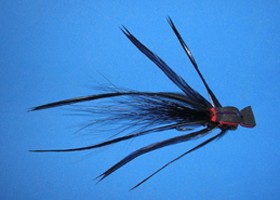
The water here–indeed all along the shoreline– dropped off quite steeply and so I cast the fly parallel to the shoreline along the drop-off. The fly had hardly settled before I was into a lovely 3-pound largemouth.
And a few minutes later another. The fly was too large to be taken by the smaller bass and oscars but that didn’t stop them from hitting it. I was quite pleased with myself–the fly actually worked. And worked well. Well, so far anyway. It takes more than a few fish to prove the worth of a new fly.
The sun was setting fast now so I worked my way quickly along the bank, trying to cover as much water as I could before dark, and picked up several more bass in the 2-3 pound range as well as a large oscar (my first of the trip). Altogether a wonderful evening. I could hardly wait to return.
Later that night the cold front moved in with a vengeance, bringing with it high winds (20-30 mph) and a nighttime temperature of 41 degrees. Not the Florida I had bargained for and I was glad that I had brought my down jacket with me. This cold front stayed with us for most of the rest of the trip and, as you might imagine, had an adverse effect on the fishing, at least the shallow-water fishing, driving all the redfish, snook, and tarpon off into the deeper, warmer water of the bay and also, lucky for us, into the warmer, deeper waters around the Flamingo Marina, where fishing was allowed when the lights were turned on. I’ve always loved night-fishing under the lights and so I wasn’t overly disappointed by the change of weather. That night then, after downing some canned chili at the campground, we set off for the marina and for about an hour or so had some pretty good action, landing tarpon (1), jacks (5), and snook (3) until the fishing slowed and it became too cold to just hang around and wait for the action to pick up. Time to head back to camp and the warmth of a sleeping bag and some pleasant dreams.
We awoke around 5 am, made some coffee, and headed back to the marina, anticipating fast action in the early dark hours of morning, but all the fish, it seemed, had cleared out. All but one small tarpon that poked its head out of the water, shivered a bit, and then swam off to find warmer water. We did the same and headed for the marina store, which was just opening, for some fresh, hot coffee and a tasty microwaved bacon cheeseburger. Yum!
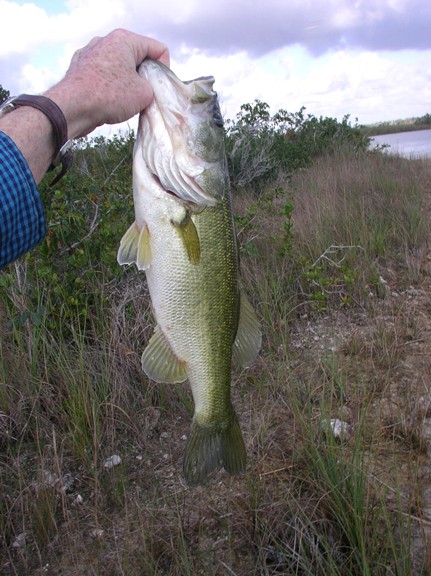 Warmed by the coffee and the rising sun, we set off again for Sweetbay Pond, eager to explore it further and sure that the fishing would be as good as it was the night before. It wasn’t. The cold had moved all the fish away from the shallows into the deeper water and the catching was difficult. Not impossible, just difficult, with fast- and deep-sinking flies needed to get down to the depths. I’m not fond of fishing deep–I find it a bit boring–and didn’t enjoy the fishing as much as I had the night before but at least it gave me the opportunity to try out some new fast-sinking flies that I tied up before the trip and I was quite pleased when they worked, attracting bass up to around four pounds.
Warmed by the coffee and the rising sun, we set off again for Sweetbay Pond, eager to explore it further and sure that the fishing would be as good as it was the night before. It wasn’t. The cold had moved all the fish away from the shallows into the deeper water and the catching was difficult. Not impossible, just difficult, with fast- and deep-sinking flies needed to get down to the depths. I’m not fond of fishing deep–I find it a bit boring–and didn’t enjoy the fishing as much as I had the night before but at least it gave me the opportunity to try out some new fast-sinking flies that I tied up before the trip and I was quite pleased when they worked, attracting bass up to around four pounds.
The rest of our time in Flamingo was spent dodging weather: rain, wind, and cool temperatures. Dave and Jamie and their two friends were more optimistic about–or less daunted by–the weather and headed off for the back country in their canoes. Dale and I decided not to join them but to remain in the campground and explore bass ponds during the day and night-fishing at the marina, but always at some time during the day we returned to Sweetbay Pond, where we could further our explorations and count on catching at least some fish while at the same time learning to feel more comfortable–but cautious–around alligators and poisonous snakes, which are quite abundant in the area. Alligators, as it turned out, proved to be generally much more wary of us than we of them and usually moved off as we approached (except for one curious one that swam quickly towards me as I was wading the shoreline; I backed off just as quickly and the alligator stopped). As time went on we learned that the presence of alligators proved to be a reliable indicator of the presence of fish; lots of alligators, lots of fish; no alligators, no (or few) fish. We then began to look for bodies of water with lots of alligators.

One such place was 9 Mile Pond, about halfway between our campground and Sweetbay Pond. If there was one alligator there there were fifty; like logjams in some places. But, alas, we missed the best time for fishing (which was just before we arrived, according to two guys who were pulling out their canoe as we arrived) and then it started to rain. Again. We sat out the short rain squall under a small shelter and then headed off in our canoes across the pond to some smaller bays that were supposed to hold a lot of bass (lots of alligators, too). After many casts in and along the mangroves and other fishy-looking spots but with no hits to show for them we headed back to shore. There we met the two guys who had done so well earlier in the morning and had gone back out at about the same time we did and they related similar luck. No fish. It had turned completely off. Ah, well, there’s always tomorrow, we thought, as we hauled the canoe out of the water and flipped it onto the roof of the rental SUV and headed on up the road Sweetbay Pond, which had now become our go-to spot when all else failed. A good choice, too, since the water had warmed up a bit by now and the bass were a bit more active than the night before, especially in the shallows, where they hit Gurglers with a satisfying frequency.
After a few more days int he Flamingo area, and getting to know it better each day, we were reluctant to leave but we had a plan to fish a guide friend of mine out of Key Largo so Dale and I drove down the day before to Homestead to return the canoes and to fish one last evening at the Aeroject Canal. The wind was still high so we paddled only about a mile from the road before beaching the canoe to wade the shoreline, where we had great fun catching peacock bass (again on the Mystery Gurgler) as well as Oscars and Mayan Cichlids and a few largemouth bass. Also learned to give a wide berth to a very large alligator that seemed to make its home fairly near where the fishing was best.
We stayed that night at the Everglades Hostel, which I really recommend if you’re into time-tripping. It’s right out of the sixties–and only twenty bucks a night if you stay in the dormitory.
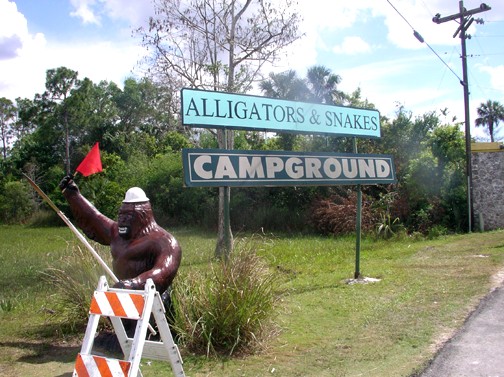 I called my friend down in Key Largo but he told me it wasn’t worth coming down. The fishing, which had been so good just a few days ago had really slowed down with the cold front. A familiar story, so Dale and I headed off in the morning for Everglades City, fishing the canal along Route 41 at different spots and picking up largemouth bass and small snook along the way.
I called my friend down in Key Largo but he told me it wasn’t worth coming down. The fishing, which had been so good just a few days ago had really slowed down with the cold front. A familiar story, so Dale and I headed off in the morning for Everglades City, fishing the canal along Route 41 at different spots and picking up largemouth bass and small snook along the way.
Outside Everglades City we found a campground, which was also the home of the Skunk-Ape Research Center (check this out on the internet, really interesting if you like hokum).
My friend Bruce Bauman had given me a list of places to fish around EC and we were eager to check them out. It was good advice, as it turned out, because we found fish in all the places he’d recommended. All but one: the East River, which he described as a small lake with mangrove islands in the middle surrounded by tarpon and snook. A good description except for the last part; the cold front had moved the tarpon and snook out of here as well. We should have known; there wasn’t an alligator in sight. Still and all we had great fishing for snook and small tarpon along the Route 41 canal as well as the canal that ran along the old part of Route 41. As you can see from the photos, there’s a lot of fish-holding structure here.
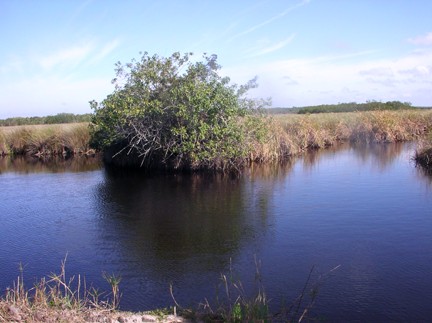
One of the most important things that we learned here was that the canals are all tidal and that the best fishing was when the tide was in, almost a waste of time when the water was low and murky. As you might suspect, the fish were most active in the early morning and late afternoon.
With two days left in the trip, we drove up to Sanibel, where, on the recommendation of local expert Joe Mahler, we fished the Ding Darling Refuge in the evening for snook. Another contact, Norm Zeigler, at the Bait Shack in Sanibel, had recommended fishing the Ladyfish Hole and that’s what we did. And appropriately named it was, since it was difficult to NOT catch a ladyfish on just about every cast (Soft Hackle Streamers worked best). Ladyfish are a lot of fun, especially on a light rod, but almost as much fun (?) was trying to land them before a very aggressive quartet of young raccoons tried to take them off your line. These raccoons were very clever; they would watch you cast, follow every movement of your retrieve, and then when the road bent with a fish or there was a splash, they would run down to the water’s edge and then try to grab it before you could reach down and release it. I quickly learned to flip the fish out of the water and off to one side before the coons could get it. Despite my best efforts, they managed to get three away from me. They’re awfully fast little critters. Or is it that I was too slow?
In between fighting ladyfish and raccoons I did manage to land a few snook (between 18″-22″) and had a huge one on that took me across the lagoon into the bushes and broke me off. The best fly for snook, by the way–and by far–was a small realistic Snook Minnow tied on a # 2 hook. Seems all the snook were focused on small young-of-the-year fry and wouldn’t look at a larger fly.
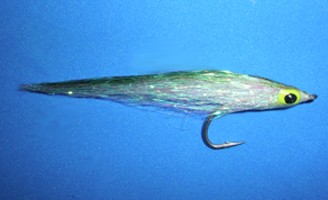
The last day of our adventure was spent in Fort Myers, where we were lucky enough to get box seats to a Red Sox spring training game between the Sox and the Pirates. I had always wanted to attend a spring training game and it was a real thrill to be able to; the City of Palms Park is a lovely place for a ball game.
After the game we headed back to Miami and fished for an hour or so along Alligator Alley where I caught a nice largemouth just before dark on a Mystery Gurgler. The last fish of the trip.
All in all, it was a great trip and I’m itching to go back sometime when the weather is a bit more stable. Until then, I’ve got to catch up on my flytying and fill the orders that have come in while I was away–and also to make plans for the next trip. Stay tuned.
Gator Bait
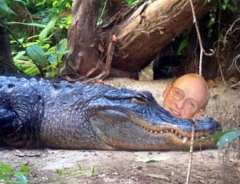 Jack took off for Florida yesterday on a float trip of the Everglades, traveling with Dale Linder, Jamie Boyle, and Dave Skok. I almost went too (though in the end I just couldn’t leave the lovely ice and snow that’s mantled our fair city of Boston this year). Before leaving Jack emailed me this photo, asking that I put it up on the blog. Sure thing, buddy.
Jack took off for Florida yesterday on a float trip of the Everglades, traveling with Dale Linder, Jamie Boyle, and Dave Skok. I almost went too (though in the end I just couldn’t leave the lovely ice and snow that’s mantled our fair city of Boston this year). Before leaving Jack emailed me this photo, asking that I put it up on the blog. Sure thing, buddy.
Alligators and/or crocodiles are a constant in the tropics, along with rough roads, mangrove swamps, and mosquitoes. Over the years I’ve gone on about half a dozen trips with Jack to the tropics and except for one croc that got a little too close in Isla Holbox last year we pretty much ignored them. The Holbox croc presented a dilemma…Jack, Dale and I were wading a salt creek about the size of the Yellow Breeches picking up small tarpon, snook, and seatrout when it went cruising by at rod’s length, maybe 12 feet long. Funny as the oh-so-cool flailing retreat to the shoreline might have been to an observer, the conversation that followed was probably better. I think it went something like:
“I think it’s gone.”
“OK, so go in.”
“I’m just going to have a cigarette first. But you go ahead.”
“Actually I needed to rest my shoulder anyway. I’ll wait for you.”
After a few minutes of casual back and forth someone suggested that anyway it was almost dinner time and if we didn’t get a move on all the good tables at the restaurants would be full by the time we got there. So logic prevailed. The croc, lying motionless under a mangrove canopy on the opposite bank, watched us go.
Katie Lavelle emailed me a list of Florida gator fatalities since the 1970s and what’s surprising about it (other than how short the list is–18 fatalities in 35 years) is that the victims and gators you’d expect to see (big reptiles + very young or old victims) actually make up less than half of the tally. The rest of the victims are adults in the prime of life and the gators involved range in size from 7-12 feet long.
Anyway, for this particular trip I think Jack stands a pretty good chance of coming out alive. Given their relative age, weight, risk-taking potential, and which would look tastiest to a hungry gator I put the gator kibble odds at:
Dave: 9-1
Dale: 12-1
Jack: 14-1
Jamie: 20-1
Flytying in Iraq
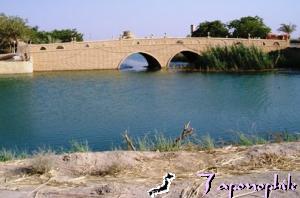 It was December 30th when I sat down here at the computer to write about my friend Tim Didas (see his blog comment of a few days ago), who’s on his second–or is it his third?- tour of duty in Iraq. Can’t remember but it’s been a long time in any case. It’s now early in the morning of the 31st, New Year’s Eve day, and I’m still looking for words.
It was December 30th when I sat down here at the computer to write about my friend Tim Didas (see his blog comment of a few days ago), who’s on his second–or is it his third?- tour of duty in Iraq. Can’t remember but it’s been a long time in any case. It’s now early in the morning of the 31st, New Year’s Eve day, and I’m still looking for words.
I often think about Tim and about all the turmoil over there, the dangers, and all the responsibilities and concerns that he must have (he’s a Sergeant Major in the Marine Corps in charge of a battalion) and how, despite all this he still finds and takes the time to get together with his chaplain one night a week to tie flies, making do with whatever materials come to hand.
Not long ago Tim wrote me that there were a couple of ponds on his camp grounds, with some sizeable fish in them. He didn’t say what they were or that he’d had the time to fish for them but he did tell me that he saw what looked like a mayfly hatch in one of the ponds and after some doing he managed to capture one of these insects. Said it was about a #16, and “like everything else over here, kind of a sandy color. It looked like a Light Cahill that had been sitting on a shelf gathering dust.”
If you can conjure up in your mind any one of the violent images of the war in Iraq that you often see on television and juxtapose this with an image of a young buzzcut Marine sitting down in battle fatigues to tie up a delicate mayfly imitation or chasing down a mayfly that had just hatched you can’t help but be forcibly struck by these sharp and powerfully contrasting images of war and of peace. And you can’t help but be thankful that we have someone like Tim “over there” serving his country–and ours–so well. And hope also that he returns home safely–and soon.
And soon it will be too. I think he has only a few months left before he rotates back to the States. And when he does he’ll probably retire, after 26 or 27 years in the Marines, and return to his home state of New York, where, if I know Tim, the trout had better be on the lookout, especially when he shows them some of those “sure-to-catch ’em” flies that he’s been tying over there in Iraq.
I checked out Curt Schilling’s blog earlier today–great blog, by the way–www.38pitches.com— and came across this video. When you watch it, imagine that one of those returning is Tim. And include him in your thoughts with a hearty Welcome Home!
On the Road–and Off!
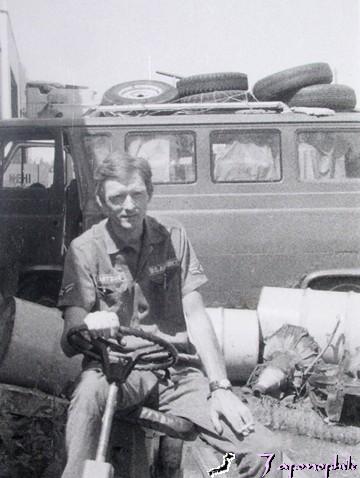 Taking a break from tying the other night I ran across this photo, taken in 1975 on my annual cross country trip from Boston to Montana. It was shot in a junkyard somewhere in Wisconsin (Janesville comes to mind), one of several I paid a visit to on my way West that summer. If it wasn’t one part breaking down in that rusty old Ford Econoline van, it was another. This time, I believe, it was the steering mechanism or shaft. I remember only that the steering wheel became disconnected from the shaft while I was driving. Same with the gear shift lever, too. Ah, well, it was a long time ago.
Taking a break from tying the other night I ran across this photo, taken in 1975 on my annual cross country trip from Boston to Montana. It was shot in a junkyard somewhere in Wisconsin (Janesville comes to mind), one of several I paid a visit to on my way West that summer. If it wasn’t one part breaking down in that rusty old Ford Econoline van, it was another. This time, I believe, it was the steering mechanism or shaft. I remember only that the steering wheel became disconnected from the shaft while I was driving. Same with the gear shift lever, too. Ah, well, it was a long time ago.
Looking at the photo brings back memories of a time when I gave no thought to driving across country with only a few hundred dollars to my name in a vehicle that was destined to die on the road. And maybe me with it. I had only one thought in mind, though: get to Montana SOMEHOW. Trouble along the way seemed part of the deal.
And trouble there was on that trip. This was only the first visit to a junkyard or mechanic. When the problem with the steering was fixed I headed West again. Outside Minneapolis I smelled smoke–and soon saw–and felt–flames coming from beneath my driver’s seat. Seems the metal seat frame had come in contact with the battery. Time to abandon ship. I gathered up my cat–by now scared out of his mind and wanting to scratch–and handed him to the friend who was travelling with me. Luckily I found the small fire extinguisher I’d bought at a yard sale and put out the fire. Not all that much damage, really, just to the seat and the battery and a few wires. Oh, yeah, and also to my face from the cat scratches.
A few days later the problems were fixed and I was on my way again. It was smooth sailing until the Black Hills of South Dakota where I developed a leak in my rusted-out gas tank which I solved by stopping up the hole with Dentine gum.
The problem with the van, though, was only a small part of my stay in that Black Hills campground. There was another problem, this time with my cat, Merlin, a Russian Blue, a beautiful cat that a few years before had strayed away from his owners one winter day and had found a home with me. I really loved that cat; he was a great travel companion and by then had spent three summers in Montana with me, camping out and following me as I fished the streams and rivers.
My friend and I had planned to spend only one night at the campground but in the morning when it was time to leave, there was no sign of Merlin. I looked all over the campground, asked all the campers if they’d seen him.No one had. I was devastated! He was my buddy–and I cared for him a lot more than I did my friend, who was begging me to leave (his vacation time was running low). I couldn’t just leave Merlin there and told my friend that we were going to stay until I found him. I almost lost my friend–but, happy to say, I did find the cat.
After making one last round among the campers and the campsite, I met a man who said that the night before he had heard a great commotion up in the trees outside his tent, sounds like a cat yowling. He stepped outside to investigate and upon looking up he saw what he thought was a great horned owl taking off and what looked like a cat dropping to the ground. This was hopeful, but only sort of. Where was the cat now? I called and called but no Merlin. I finally gave up and went to my tent and slept, thinking that I’d get up at first light and try again. Around four in the morning I heard a cat’s cry. It was Merlin. I jumped out of my sleeping bag, opened the tent flap and looked outside. In the moonlight I could see him crawling towards the tent, as close to the ground as he could get, heading “home.”
Merlin had indeed been picked up by the owl. He had two holes in his back where the owl’s talons had pierced the skin. Fortunately the owl hadn’t broken his spine and the holes healed up before we made it to Yellowstone. In case you’re wondering, Merlin lived to make eight more trips with me to Montana but I noticed that he was much more reluctant to wander around at night than he used to be.
We left South Dakota that morning and made it as far as the Big Horn Mountains in Wyoming without a problem–that is until we had to climb one of those mountains. Seemed the timing mechanism had to be re-set for the higher altitudes. Found this out when I had to back down a mountain road that the van couldn’t quite make. Live and learn.
Finally made it to Yellowstone after seventeen days on the road. My friend was kind of upset, since he had only three weeks of vacation and had used up most of it visiting junk yards and mechanics or looking for a cat. Can’t blame him, really.
When you look at the photo you may notice that there are a number of tires on the roof of the van. This is because every time I visited a junk yard I would buy up almost any used tire that would fit the tire mount. Didn’t matter if the tires were fifteen inch or fourteen inch or whatever they were; as long as the holes on the tire frame matched what were on the mount I’d buy them. Cheaper than new tires. So what if they wobbled a bit. Didn’t bother me. As long as they’d last the summer–and maybe the trip home.
Well, they never did last the trip home. Ever the optimist, I didn’t know that the days of this Ford Econoline van were numbered. I should have realized it when, towards the end of summer I headed west to visit my friend Bob in LA. I was driving west of Elko, Nevada when, much to my surprise, I saw a tire rolling down the highway just in front of me. At about the same moment my front end collapsed like a wounded elk and I realized it was my front right tire that was rolling down the highway. I skidded to a stop and got out to look further into this problem. Now you’d think by this time, being the owner of a mechanic’s dream, that I’d know a lot about cars, but I really didn’t (still don’t) but I could see from a quick examination of the wheel well that the number of studs required to hold a wheel to the rest of the frame weren’t there. Apparently most of the studs had crystallized and snapped and the other nuts had come loose, which led, I guess, to the sudden departure of the tire. What to do?
The first thing needed seemed to be to recover the missing wheel. Not an easy thing, it turned out. If you’ve ever driven west out of Elko you know that it’s a pretty straight road, goes on for miles without a turn. I finally found the tire just off the side of the road after walking along the highway for about half a mile. Nothing to do now but roll it back to the van and take it from there. It was a long walk, I can tell you that. Hot, too, as I recall.
Back at the van, I jacked up the front end and mounted the wheel onto the two remaining studs, tightened the bolts, and headed back to Elko. I don’t know if you’ve ever driven a car whose tire is held on by only two bolts but I don’t recommend it. The van wobbled from side to side as I drove along the highway at about ten miles an hour until I finally exhaled the breath I was holding and pulled into the next garage I saw. Just my luck, it was closed and wouldn’t be open until Monday (this was Saturday night). There were no other garages open either I soon found out and so I now had a day or so to explore Elko (nice town but I wouldn’t want to live there).
On the road again on Monday–after being fitted with new studs–I made it to LA without any major problems–if you don’t count the fact that the van now didn’t go much more than about twenty miles an hour without overheating. Seems it now needed a new head gasket. This proved to be the final straw and so I decided to sell it. But who would buy it? There’s no Museum of Junk Cars that I know of but after a few calls I did find a junk dealer in LA who said that if I could drive it in he’d give me seventy-five dollars. Seventy-five dollars was exactly the cost of a flight from LA to West Yellowstone, and having no hope of a better offer I headed off in search of the junk dealer. The van actually made it to the junk dealer but not before I was cited by a California state trooper for driving too slow on the Santa Monica Freeway. The minimum speed there is thirty miles an hour. Which to this day I think is very unfair since according to my speedometer I was doing twenty-five.
5 Places to Flyfish Before I Die
 I was at Barnes & Noble the other day to pick up a new book of Sunday Times crossword puzzles and while I was walking around I was amazed at how many books there are whose titles invite you to do SOMETHING before you die. Just a few titles: 1001 Places to Visit Before You Die; 50 Great Meals to Eat Before You Die; 50 Mountains to Climb Before You Die; 1001 Books You Must Read Before You Die; 1001 Paintings You Must See Before You Die, etc. I thought, “Man, if I were in marketing, I’d make sure that every funeral home in the country has copies of these books for sale.” It’d be a natural setting; they’d sell like hotcakes–surely better than Mary Roach’s Stiff, a delightful, fascinating, but somewhat morbid book about what happens to bodies after they die.
I was at Barnes & Noble the other day to pick up a new book of Sunday Times crossword puzzles and while I was walking around I was amazed at how many books there are whose titles invite you to do SOMETHING before you die. Just a few titles: 1001 Places to Visit Before You Die; 50 Great Meals to Eat Before You Die; 50 Mountains to Climb Before You Die; 1001 Books You Must Read Before You Die; 1001 Paintings You Must See Before You Die, etc. I thought, “Man, if I were in marketing, I’d make sure that every funeral home in the country has copies of these books for sale.” It’d be a natural setting; they’d sell like hotcakes–surely better than Mary Roach’s Stiff, a delightful, fascinating, but somewhat morbid book about what happens to bodies after they die.
Anyhow, in addition to the books mentioned above there was also one by Chris Santella called 50 Places to Flyfish Before You Die. In it various angling personalities divulge their particular pre-death wishes and invite you to fantasize about your own. Which is sort of the point of this particular post.
Now, I don’t plan on dying any time soon (knock on wood) but with my 65th birthday coming up in a few days (on December 7 by the way; mark the date) I can’t help but think it’ll probably be within the next thirty years. So where are some of the places I simply MUST fish before that Grim Reaper shows up at my door and asks to borrow a scythe-sharpener? I’ve been to Africa, New Zealand, Europe, Central America, and all over the Caribbean as well as the American West, and I’d dearly love to fish these places many times in the coming years–and plan to–but where else? Trying to whittle down to a manageable number all the places I’d like to fish, say 5 for now, is a bit difficult, but I suppose it’s a way of prioritizing and so here goes…
Cuba
I’d love to fish Cuba. Not as it is now, with Castro still in power, but a free Cuba, where I could just wander at will and seek out monster bass in some of the inland lakes or fish the flats for bonefish and tarpon. Just the thought of it makes me want to crack open the Teach Yourself Spanish book that I bought a few years ago and never read.
The Seychelles

About a thousand miles off the coast of Africa in the Indian Ocean, the Seychelles intrigue me no end, not least of all because they’re so remote. I can picture myself kayaking around the different islands for a month or more, fishing on my own, exploring, lost to space and time.
Argentina–Tierra del Fuego

I’d love to bum around these places for a month or two, showing up in the just right place at just the right time.
Nepal and Bhutan

These places have always interested me; probably because they’re so remote and I don’t know many people who have fished there. But I’ve heard some interesting things about the trout fishing there among the mountains. Might as well go to Tibet also while I’m over that way. See if I can find Shangri-La.
The Australian Coast

I’ve been to Australia once (in 1965)–on leave from the US Air Force–but never had the chance to fish. I’d like to take a couple of months and wander along the coast, maybe even taking in the Great Barrier Reef, checking out all the “hot spots” for barramundi, trevally, etc. Maybe even learning how to speak “Strine.”
Well, there it is: my list, my 5 Places to Fish Before I Die. What are yours?